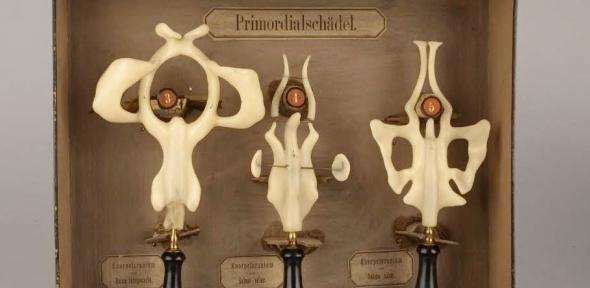
Models of the animal body began to be mass-produced during the 18th century, and the market for them grew alongside the 19th century expansion of universities and their new, experimental scientific disciplines. Frogs played an especially prominent role in the study of animal reproduction. Our wax models from the Ziegler studio represent two uses of frogs in developmental biology and point to the role that frogs, and the artisans who modelled them, played in 19th century biological controversies.
Adolf Ziegler (1820-1889) was the 19th century's pre-eminent wax modeller in developmental physiology and anatomy. His clients were the growing number of researchers who studied the forms and transformations of animal embryos and their internal anatomy. Ziegler's enlarged wax models provided one especially vivid and illuminating way of conveying knowledge of physical structures in otherwise microscopically small, changing, and complex embryonic forms. The Whipple Museum contains many wax models from the Ziegler studio, two sets of which contain representations of the frog.
The Whipple Museum's 'primordial skull' collection contains Ziegler models of the structure found in the heads of three vertebrate embryos during early embryonic formation. This structure, made of cartilage was understood to shape the later growth of the mature skull's solid bone. The 'higher' the vertebrate, the earlier the mature skull replaced its 'primordial' predecessor, as biologists understood it. The models were sold in a display case that includes labelled representations of frog, salmon, and axolotl embryos.
In 1889, Adolf Ziegler died and left his business to his son, Friedrich. The Ziegler studio weathered its founder's death with ease; strong international reputation ensured continued prosperity throughout Friedrich's management. The 're-publication' of some of his father's earliest models, like our series charting the development of a frog embryo, attests to that continued prosperity. This series, made in 1892, follows the transformation of a single fertilized embryo as it multiplies and transforms into a mature tadpole.
Read more:
Frogs Models, Artisans, and Academic Controversy
Techniques of Observing and Modelling
Henry Schmidt
Henry Schmidt, 'Ziegler's Wax Models', Explore Whipple Collections, Whipple Museum of the History of Science, University of Cambridge.



